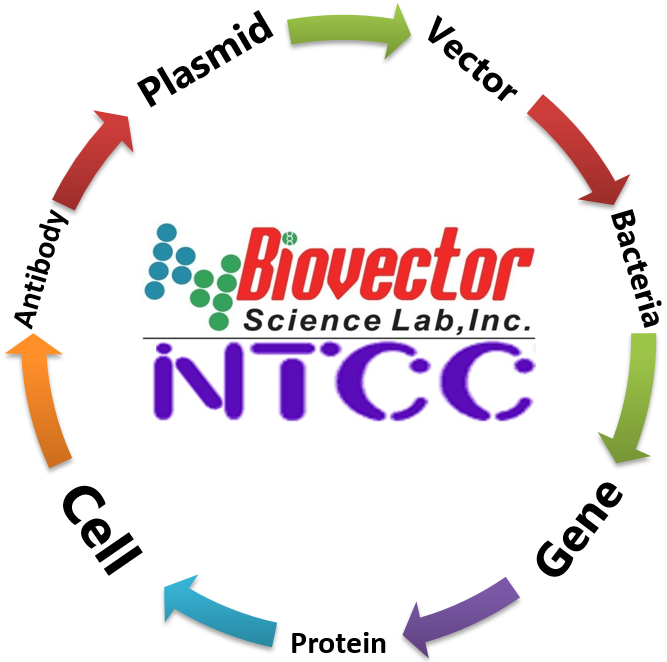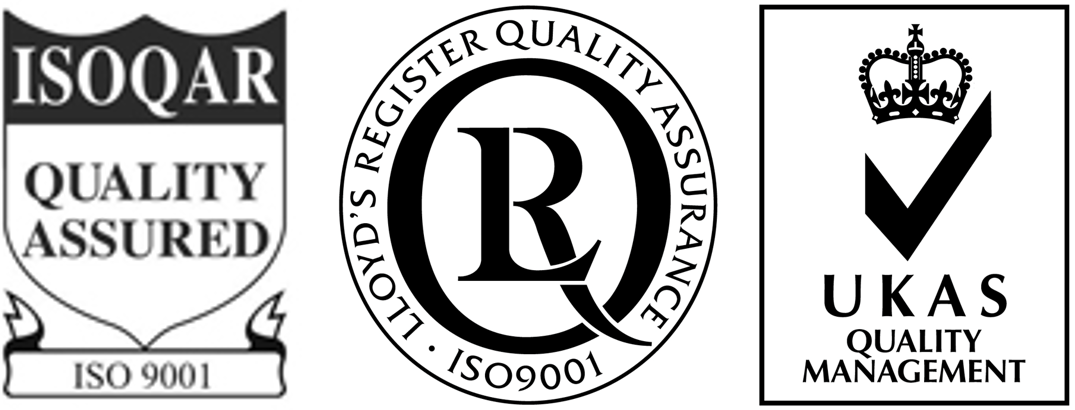Nisin诱导调控乳酸菌表达载体系统及宿主菌-BioVector NTCC质粒载体菌种细胞蛋白抗体基因保藏中心
- 价 格:¥17930
- 货 号:Nisin Controlled Gene Expression System for L. lactis
- 产 地:北京
- BioVector NTCC典型培养物保藏中心
- 联系人:Dr.Xu, Biovector NTCC Inc.
电话:400-800-2947 工作QQ:1843439339 (微信同号)
邮件:Biovector@163.com
手机:18901268599
地址:北京
- 已注册
The Effective Nisin Controlled Gene Expression System for L.
lactis
Nisin诱导调控乳酸菌表达载体系统-BioVector NTCC质粒载体菌种细胞蛋白抗体基因保藏中心
Controlled gene expression in L. lactis – an emerging alternative
to recombinant protein production
Small scale L. lactis culture
Features
The system is fully food grade
No endotoxins are produced
No inclusion bodies
No spores
No extracellular proteases
Tightly controlled gene expression allows production of toxic proteins
Simple fermentation, scale-up and downstream processing
Description
Next to the wealth of traditional food applications, L. lactis is
increasingly used for modern biotechnological applications such as the
production of recombinant proteins for food, feed, pharmacological and
biocatalysis applications. Owing to the easy genetic accessibility of L.
lactis the Nisin Controlled gene
Expression (NICE®) system developed at NIZO has
played a key role in this development.
Applications
Production of homologous and heterologous proteins for food, feed,
pharmacological and biocatalysis applicationsProduction of prokaryotic and eukaryotic membrane proteins
Production of exopolysaccharides
Production of ingredients through metabolic engineering: e.g. alanine,
folate, diacetylPreparation of L. lactis as a biocatalyst by expression of a suitable
enzyme as, e.g., dehydrogenases and in-situ cofactor regenerationHigh-throughput screening for enzyme evolution or enzyme comparison.
Plasmids for Intracellular Expression and Secretion
胞内表达和分泌表达乳酸菌载体-BioVector NTCC质粒载体菌种细胞蛋白抗体基因保藏中心

Vector map of pNZ9530
Plasmids for Intracellular Expression
The replicons of the vectors pNZ8008, pNZ8148, pNZ8149 and pNZ8150 are
identical and came originally from the Lactococcus lactis plasmid pSH71.
However, this replicon has a broad host range. Plasmids with this replicon can
replicate in many Gram-positive bacteria, such as Lactobacillus plantarum
and Streptococcus thermophilus.pNZ8148 – In this vector the nisA promoter is followed by an NcoI
site for translational fusions at the ATG. It contains a terminator after the
MCS. Sequence adaptation for cloning in NcoI can result in a change of the
second amino acid of a protein (Mierau and Kleerebezem, 2005).pNZ8149 – This vector has the lacF gene as food grade
selection marker. To enable selection of transformants, it needs a host strain
with the lactose operon without the lacF gene like Lactococcus
lactis NZ3900. The nisA promoter is followed by an NcoI site for
translational fusions at the ATG. It contains a terminator after the MCS.
Sequence adaptation for cloning in NcoI can result in a change of the second
amino acid of a protein (no reference, example: (Mierau et al., 2005)).pNZ8150 – The nisA promoter is followed by a ScaI site for
translational fusions precisely at the ATG. Blunt end fragments are generated by
PCR and cannot be cut out again after ligation to the ScaI site (Mierau and
Kleerebezem, 2005).pNZ8151 – This vector carries the lacF gene as food grade
selection marker. The nisA promoter is followed by an ScaI site for
translational fusions at the ATG start codon. It contains a terminator after the
MCS (Mierau and Kleerebezem, 2005).pNZ8152 – This vector contains the alr gene as food grade
selection marker. The nisA promoter is followed by an ScaI site for
translational fusion at the ATG start codon. It contains a terminator after the
MCS (Mierau and Kleerebezem, 2005).pNZ8008 – This is a reference plasmid for testing the nisin induction
in Lactococcus and other lactic acid bacteria genera. A gusA gene
without promoter was fused to the nisin A promoter (PnisA) (de Ruyter et
al., 1996).pNZ9530 – A low copy plasmid with pAMΒ1 origin of replication that
carries the nisR and nisK genes. For cloning in Lactococcus
strains and in strains of other lactic acid bacteria genera that do not have the
regulatory genes integrated into the chromosome. In this case, a two plasmid
system is used for nisin induced expression: e.g. pNZ9530 (nisRnisK) + pNZ8150
(+insert) (Kleerebezem et al., 1997).
Secretion Vectors
The secretion vectors pNZ8120, pNZ8121, pNZ8122, pNZ8123, and pNZ8124 are
broad host range vectors with a chloramphenicol selection marker. They differ in
their signal sequence and in their cloning sites.pNZ8120 – A vector with the signal sequence of the lactococcal cell
wall proteinase PrtP (Vos et al.). Cloning is possible via an NaeI site
and the mature protein starts with its own first amino acid (results not
published).pNZ8121 – This vector has the signal sequence of PrtP also, but
cloning is done via an EcoRV site, so that the mature protein starts with the
first amino acid of PrtP after the signal cleavage site. This setting can
contribute to a greater efficiency in removing the signal peptide (results not
published).pNZ8122 – A vector with the signal sequence of the Lactobacillus
brevis SlpA protein (Novotny et al., 2005). Cloning is done via an
NruI site, so the mature protein starts with the first amino acid of SlpA after
the signal cleavage site. This setting can contribute to a greater efficiency in
removing the signal peptide (results not published).pNZ8123 – This vector provides the signal sequence of the lactococcal
major secreted protein Usp45. Cloning is done via an NaeI site; mature protein
starts with its own first amino acid (results not published).pNZ8124 – Like pNZ8123 this vector has the signal sequence of Usp45,
but cloning is done via an EcoRV site and the mature protein starts with the
first amino acid of Usp45 (van Asseldong et al., 1993 & 1990) after
the signal cleavage site. This setting can contribute to a greater efficiency in
removing the signal peptide (results not published).
Overview on available Plasmids
Host Strains
Electron microscope image of Lactococcus lactis
Description
Lactococcus lactis NZ9000 – pepN::nisRnisK;
Standard host strain for nisin regulated gene expression (NICE®).
The strain contains the regulatory genes nisR and nisK integrated
into the pepN gene (broad range amino peptidase) (Kuipers et al.,
1998; Mierau and Kleerebezem, 2005).Lactococcus lactis NZ9100 – nisRnisK;
Standard host strain for nisin regulated gene expression (NICE®).
The strain contains the regulatory genes nisR and nisK integrated
in a neutral locus.Lactoccoccus lactis NZ9130 – alr-, nisRnisK; This host
strain is the same as N9100 used for nisin regulated gene expression. It carries
an alr deletion (Δalr) that encodes for alanine racemase. Deletion
of the alr gene results in auxotrophy for alanine suggesting that the
strain is unable to grow on media without alanine unless alr is provided
on a plasmid (Bron et al., 2002).Lactococcus lactis NZ3900 – lacF-, pepN::nisRnisK;
Standard strain for food grade selection based upon the ability to grow on
lactose. This strain is a progeny of NZ3000, a strain in which the lactose
operon, that is generally present on plasmids, has been integrated into the
chromosome and the lacF gene was deleted. Deletion of the lacF gene makes
this strain unable to grow on lactose unless lacF is provided on a plasmid (de
Ruyter et al., 1996a).Lactococcus lactis NZ3910 – lacF-, nisRnisK;
Same as NZ3900 for food grade lacF selection, but with
nisRnisK integrated in a neutral locus.
Overview on L. lactis Host Strains
| Strain | Order # | Species | Food Grade | Remarks |
|---|---|---|---|---|
| NZ9000 | NTCCS09000-01 | L. lactis | NO | pepN::nisRnisK |
| NZ9100 | NTCCS09100 | L. lactis | NO | nisRnisK in neutral locus |
| NZ9130 | NTCCS09130-01 | L. lactis | YES | nisRnisK in neutral locus, alr- |
| NZ3900 | NTCCS03900-01 | L. lactis | YES | pepN::nisRnisK, lacF- |
| NZ3910 | NTCCS03910-01 | L. lactis | YES | nisRnisK in neutral locus, lacF- |
- 公告/新闻




